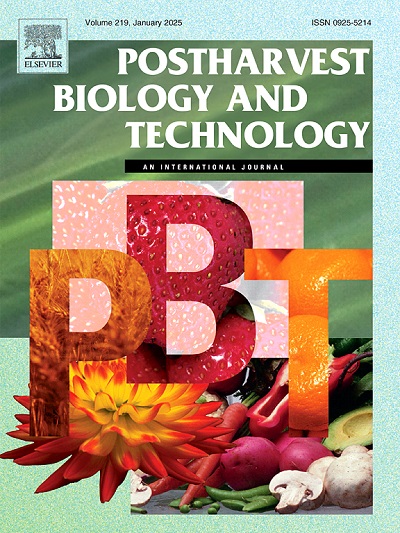Identification, pathogenic mechanism and control of Aspergillus aculeatus causing postharvest fruit rot in Longan
IF 6.4
1区 农林科学
Q1 AGRONOMY
引用次数: 0
Abstract
Longan (Dimocarpus longan Lour) fruit rot is a severe post-harvest disease that significantly hampers the development of longan trade. In 2023, this disease was observed in Guangdong, China, with an incidence rate of approximately 25 %. Morphological and molecular identification confirmed it as Aspergillus aculeatus. To our knowledge, this is the first report of A. aculeatus causing longan fruit rot. The isolated strains maintained high pathogenicity. Infection by A. aculeatus increased the activities of polygalacturonase (PG), pectinase (PE), cellulase (CL), and β-galactosidase (β-Gal) in longan, accelerating the breakdown of cell wall materials (cell wall material, hemicellulose, cellulose, and pectin). This degradation leads to fruit decay, which is the primary cause of longan rot associated with this pathogen. A. aculeatus showed the highest sensitivity to fludioxonil, with an EC50 value of 0.0170 ± 0.0006 µg/mL, and demonstrated good control efficacy in vivo (over 75 %). Therefore, fludioxonil is recommended as an effective fungicide for the management of A. aculeatus. In the future, effective resistance management should be implemented by rotating fungicides with distinct modes of action to mitigate resistance emergence and ensure the sustainable development of the fruit industry. This study provides a theoretical basis for the control of longan fruit rot.
求助全文
约1分钟内获得全文
求助全文
来源期刊

Postharvest Biology and Technology
农林科学-农艺学
CiteScore
12.00
自引率
11.40%
发文量
309
审稿时长
38 days
期刊介绍:
The journal is devoted exclusively to the publication of original papers, review articles and frontiers articles on biological and technological postharvest research. This includes the areas of postharvest storage, treatments and underpinning mechanisms, quality evaluation, packaging, handling and distribution of fresh horticultural crops including fruit, vegetables, flowers and nuts, but excluding grains, seeds and forages.
Papers reporting novel insights from fundamental and interdisciplinary research will be particularly encouraged. These disciplines include systems biology, bioinformatics, entomology, plant physiology, plant pathology, (bio)chemistry, engineering, modelling, and technologies for nondestructive testing.
Manuscripts on fresh food crops that will be further processed after postharvest storage, or on food processes beyond refrigeration, packaging and minimal processing will not be considered.
 求助内容:
求助内容: 应助结果提醒方式:
应助结果提醒方式:


